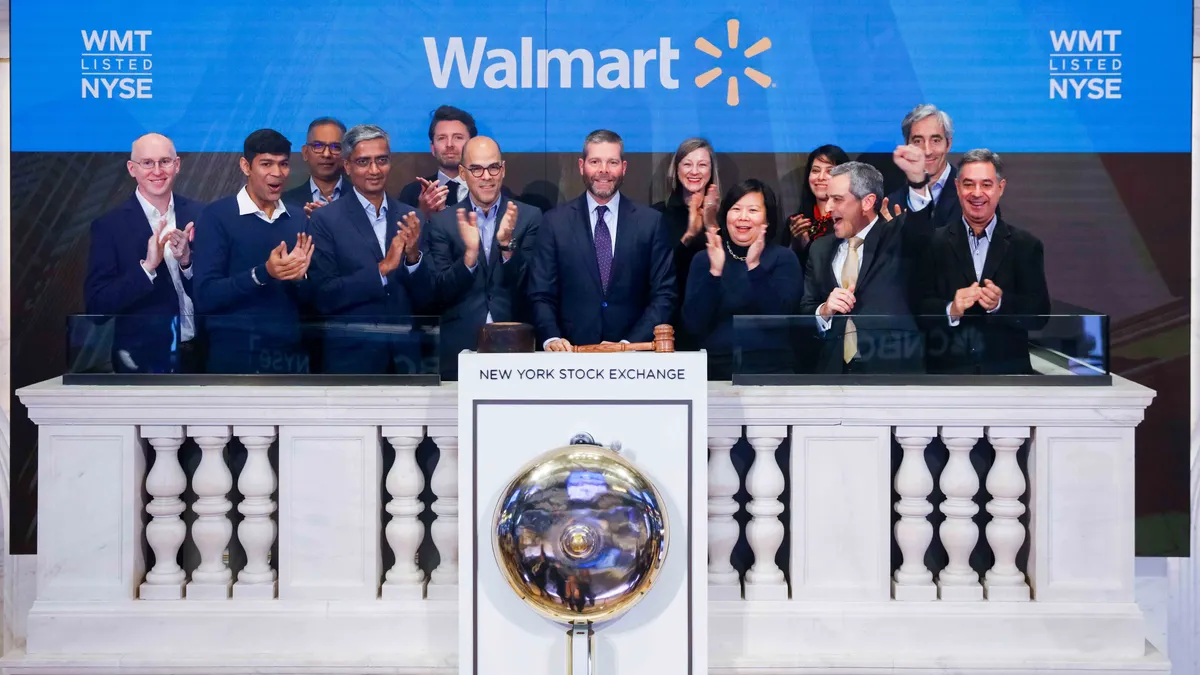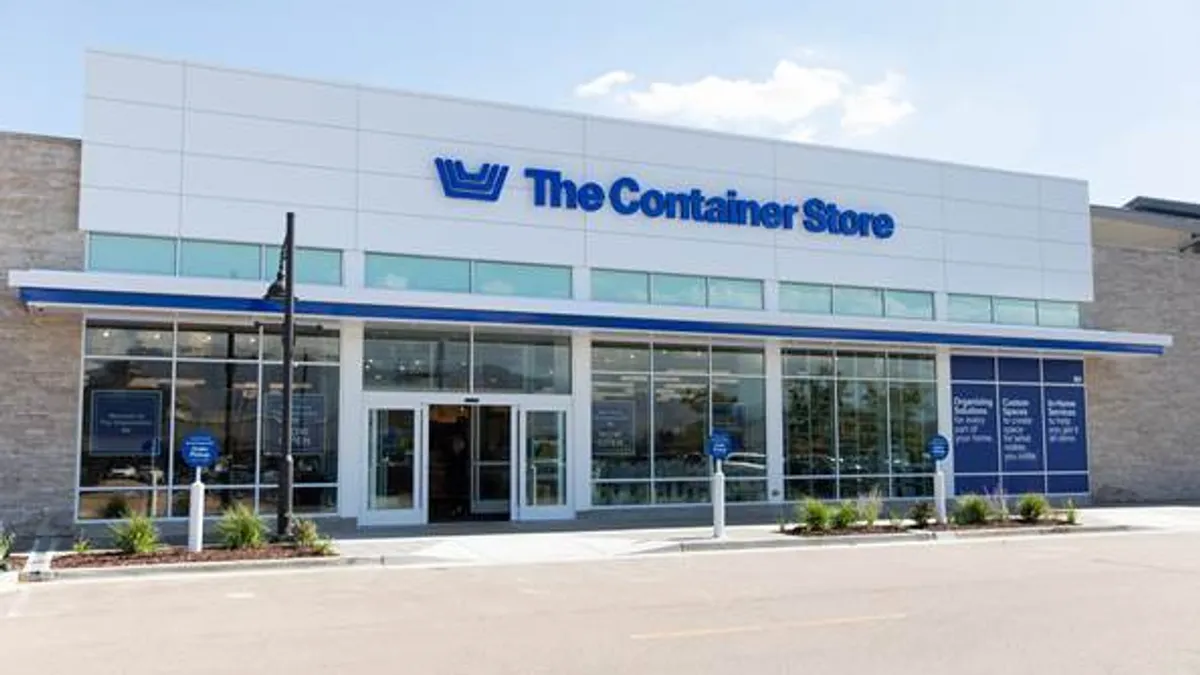Even as consumers continue feeling pressured by inflation and the economic environment, Walmart has been able to sustain solid financial performance. In 2023, the retailer reported a 6.7% rise in total revenue to $611.3 billion.
Still, the company is trying to stay ahead of – or at least keep up – with industry changes and shifting consumer expectations. Walmart began this year with several major business announcements. The new initiatives are centered around employee compensation, expanding its physical store footprint and introducing new consumer-facing technologies.
“The initiatives all tie back to a desire to improve performance of the core U.S. business,” Neil Saunders, managing director of GlobalData, said in an email. “Walmart has recently had an excellent run of growth partly powered by inflation pushing up prices and partly off the back of acquiring new customers. However, it’s clear that both these dynamics are running out of steam, so Walmart must find other avenues to boost growth.”
Here’s a look at four of the company’s recent strategic moves on pay, technology and in-store experiences.
1. Store managers' earnings surge
Walmart recently made two major changes to its total compensation package for store managers. In mid-January, the company increased store manager salaries to an average of $128,000 from $117,000 per year.
Walmart also increased the role that store profit plays in bonuses. Now, Supercenter managers who hit all their targets can receive an annual maximum bonus equal to 200% of their base salary.
“Not only are you responsible for exceeding customer expectations day in and day out; each of you is the CEO of a multimillion-dollar business,” Cedrick Clark, executive vice president of store operations for Walmart U.S. wrote in a note to store managers. “We see an investment in you as an investment in our culture, our core values, and in the day-to-day experience of every associate in every store. Investing in you is an investment in our future.”
Less than two weeks later, Walmart announced it was adding $20,000 in annual stock grants to managers’ compensation packages in the U.S. Together, the new average salary, 200% potential bonus and stock grants could push the total potential compensation for a Supercenter store manager to about $404,000.
2. Sharing the wealth with a stock split
Despite economic hardships like recessions and inflation, the company’s broad offering of essentials like groceries has helped buoy the business and earnings if consumers pull back on discretionary spending elsewhere.
Walmart on Jan. 30 announced it’s conducting a three-for-one stock split. More than 400,000 Walmart employees currently participate in the company’s stock purchase plan, which has been available for almost 30 years. The plan allows eligible associates to buy stock through payroll deductions and Walmart provides a 15% company match on the first $1,800 purchased yearly.
Part of the rationale behind the move, the company said, is to keep stock purchase prices accessible for store-level employees. Existing shareholders will receive two additional shares of common stock for each share held, payable after the market closes on Feb. 23. The stock is set to begin trading on a post-split basis when the New York Stock Exchange opens on Feb. 26.
For the third quarter of the company’s 2024 fiscal year, Walmart said it had returned $5.8 billion year to date to shareholders, offering a 14% return on investment. Walmart’s market capitalization was about $447 billion on the date of the announcement.

3. A refreshed, growing store footprint
Over the next 12 months, the company plans to remodel 650 stores in 47 states and Puerto Rico. Over the next five years, the company said on Jan. 31 it wants to build or convert over 150 locations while continuing ongoing store remodels.
“Refurbishing stores is a bid to boost the non-food business which has struggled of late. Walmart wants to replicate Target’s success by providing a better shopping experience that helps drive footfall and sales,” Saunders said.
Walmart has about 3,500 Supercenters and about 1,650 more retail units in the U.S.
CEO John Furner said in a blog post that the new and remodeled stores will reflect the company’s store of the future concept. Furner said the new and updated stores will enable the retailer to meet and exceed customer expectations, regardless of how they choose to shop.
The company in October announced a $500 million investment in remodeling 117 stores. At that time, it said it planned to spend over $9 billion over the next two years to modernize more than 1,400 U.S. stores. The changes were slated to include improved layouts, larger pharmacies, digital displays and technology enhancements.
“New stores is an obvious tactic as it allows Walmart to infill in areas where it under indexes on customer and market share,” Saunders said. “Given shopping habits have shifted so much over the past five or so years, there are now more of these white spaces that Walmart can grow into.”
4. A clear vision for a tech-focused future
Throughout last month, Walmart touted several of its consumer-focused technology initiatives.
They include offering virtual fittings for eyeglasses with augmented reality technology and shopping searches enhanced with generative artificial intelligence. Walmart is also planning to introduce Shop with Friends, a social commerce that uses AI, VR and other technologies. The retailer also said last month that it’s expanding drone delivery to nearly two million more households in the Dallas-Fort Worth area.
“We're at the cusp of dramatic changes in how people discover, buy and receive goods,” the company said in a news release that summarizes its recent tech initiatives. “Ultimately, they expect us to simplify the shopping experience for them. GenAI, AR/VR and extended reality play a critical role in enabling that mission,” the retailer said.
But during the same month, Walmart announced a slew of new initiatives and confirmed it planned to close Store No. 8. The business unit was in operation for about seven years. It was responsible for services like in-home delivery and text and voice-based shopping. In a statement, Walmart said established global technology, design and product organizations and the responsibility to shape future retail initiatives is now shared across the company.
The pay boost, store refreshes and investment in customer-facing tech indicate that “Walmart hopes that this raft of initiatives will all pull the business in the right direction and will keep the momentum going even as some favorable dynamics unwind,” Saunders said.





















